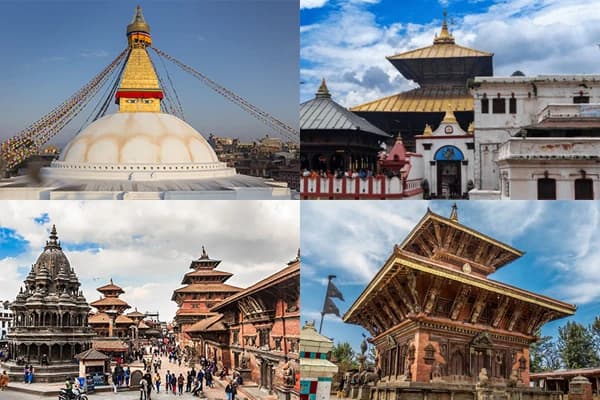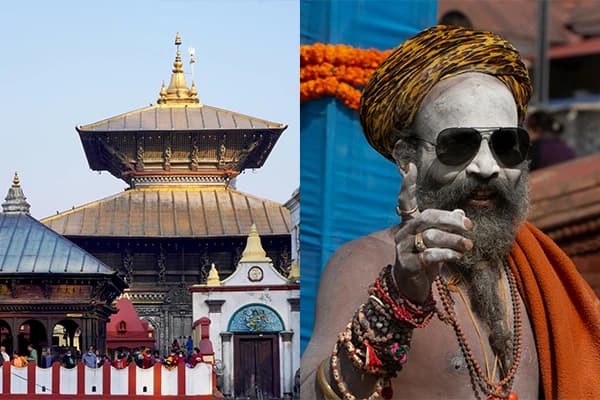Historical and Cultural Heritages
Ghorepani has both a rich history and rich cultures. The Ghorepani village history is linked to ancient times. At that time, traders who were traveling along the old Tibetan salt trade route connecting Nepal to Tibet used to take their rest in Ghorepani village before traveling further.
Before being a stop on the trade route, the village served as the Goth camp (a place for cowsheds).
Initially, the village was just a Goth camp with local populations living nearby. However, they later migrated and then settled in the village. Among them, the predominant ethnicities are Magar and Gurung, with people of other ethnic groups also residing there.
The Magar and Gurung peoples are known for their unique cultures and traditions. Basically, they are the hill tribe with rich cultural values.
The local culture of the Ghorepani village is a blend of Hindu and Buddhist practices. The customs and festivals followed and celebrated in the village are unique to the Magar and Poon communities.
Ghorepani also hosts programs featuring the traditional dances. The popular dances of the villages are ghatu naach, maruni dance, and sorathi dance. During the dances, the people wear the unique traditional attire, and the village is decorated too.
Several festivals, like dashain, tihar, tamu lhosar, sakela parva, and many more, are celebrated with great joy among family and community members.
Village Life and Architecture
The locals in the Ghorepani village live in close-knit communities. They do agriculture (terraced farming) and tourism-related business (like operating teahouses and running gear shops) for a living. As the village is on the way of the popular trekking trails, it serves as an important resting point for the trekkers.
The architecture of the houses reflects the traditional styles of the Gurung and Magar ethnic groups native to the region. It features intricate woodwork and carvings and is made up of stone and wood.
Each house in Ghorepani serves as a living museum of the local culture. The ancient, detailed craftsmanship can be seen in those houses.
Natural Beauty and Trekking Routes
The Ghorepani village is in a serene place and is surrounded by rhododendron forests, alpine meadows, subtropical forests, and terraced farms. The region boasts over 20 varieties of rhododendrons and several species of wildlife.
The village offers the vistas of the snowcapped peaks like Dhaulagiri, Annapurna South, machhapuchhre, Hiunchuli, and Nilgiri. The popular viewpoint from which trekkers can witness the sunrise and sunset views is Poon Hill, which is nearby the village.
Ghorepani serves as a popular trekking destination for several trekking routes like the poon hill trek, the Ghorepani Trek, and so on. It is also the gateway to the treks to annapurna base camp and the annapurna circuit.
Accommodations and Amenities
Ghorepani village offers a range of accommodation options, especially for the trekkers. The options include teahouses, lodges, guesthouses, and some lodges. The amenities are mostly basic. Small shops in the village sell snacks, drinks, and trekking gear too.
The accommodations feature twin-sharing bedrooms and shared facilities. There are basic hot showers, Wi-Fi, and device charging available in the teahouses at small costs. The dining halls are mostly shared.
The food services include local Nepali cuisines and some international dishes with Western options. Breakfast options are bread, chapatis, eggs, porridge, tea, and coffee. The common lunch and dinner options include daal bhhat, Tibetan momos, thukpa, pasta, sandwiches, and so on.
Responsible Tourism Practices
While visiting the Ghorepani village, it is important to follow responsible tourism. Below are some of the measures that you can follow to be a responsible tourist.
- Always ask permission before taking photos of the property or person.
- Dress modestly, especially during the temple visits.
- Try to purchase the locally made crafts to support the local economy.
- Stick to the planned and marked route when trekking to the village.
- Use the Ghorepani village map to explore the heritage sites in the village.
- Avoid littering and carry your own waste.
- Always use eco-friendly products.
Best Time to Visit Ghorepani
The best time to visit the Ghorepani village is during the spring and autumn seasons. These seasons offer stable weather conditions, clear skies, and mild temperatures. The views of the snowcapped peaks can also be seen clearly.
For fewer crowds, the trekkers can also visit during the winter or the monsoon season with proper preparations. The winter offers the cold weather with the breathtaking snowy atmosphere, while the monsoon offers lush greenery with the frequent rains.
Getting There
There are several ways to reach the village. Some of the transportation options include
- By bus or jeep and hiking
It is one of the popular options to reach the Ghorepani village. Trekkers can take the bus or jeep from pokhara to Ulleri. From there, they can hike up to Banthali (the official starting point for the Ghorepani trekking).
Then, from Banthali, the trekkers can hike up upto the Ghorepani village.
Trekkers can also drive by motorcycle or car up to Nangithanti. The road option is only available up upto nangithanti. From there, the trekkers need to hike to reach the Ghorepani.
- Drive from Kathmandu and hike
For the trekkers who want to visit from Kathmandu, they can drive to Pokhara. From Pokhara, there are buses available to Nayapul. From there, you can trek to the Ghorepani village.
Embracing Tradition in the Himalayas
Ghorepani village is a unique destination that offers a rare opportunity to experience traditional village life in a majestic Himalayan environment. The trails to the villages go through the lush green forests and terraced fields, offering peaceful trekking experiences.
The trekkers can engage with the local communities, partake in the cultural practices, and enjoy the natural beauty of the region. Truly, a visit to the Ghorepani village promises the lasting memories of Nepal's rich heritage and stunning landscapes.
FAQs
1. What is the Ghorepani village's distance from Pokhara?
From Pokhara, Ghorepani is about 42 kilometers away.
2. How can I be prepared during the Ghorepani village visit during the monsoon season?
You can visit the Ghorepani during the monsoon season by following the following precautions and preparations:
- Packing the rain gear, like a raincoat, umbrella, waterproof clothes, and more.
- Studying the weather conditions before trekking.
- Use the trekking poles while trekking.
- Carry the anti-leech spray or the salt pouch around the leeches.
- Start trekking early in the morning to avoid the afternoon rains.
- Hire a local guide familiar with the monsoon trails.
- Avoid the high-risk areas prone to landslides and flooding.
3. What is the Banthati to Ghorepani distance?
The distance from Banthato to Ghorepani is around 6.6 kilometers.
Want to walk through history and Himalayan beauty in one go? Book your Ghorepani trek today.





